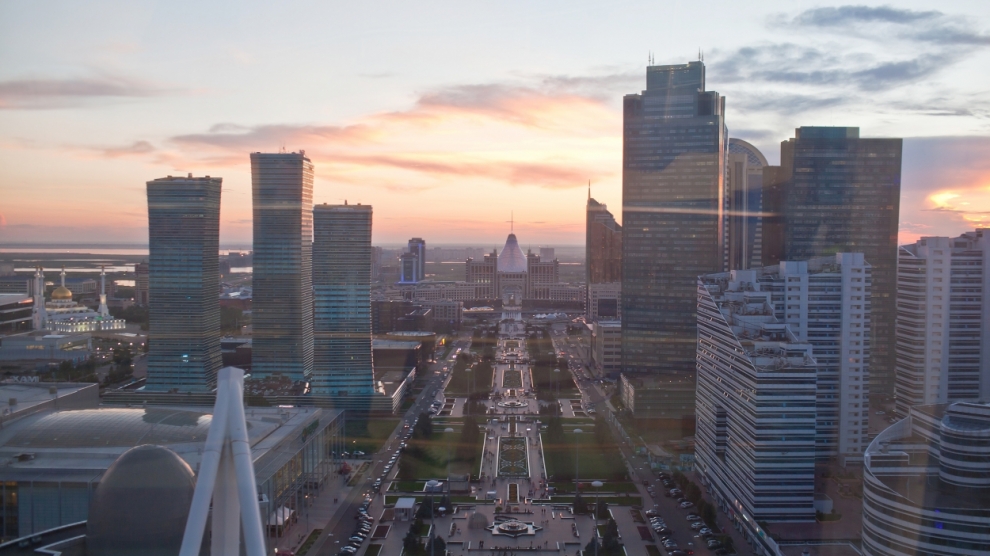It was in Kazakhstan that the world first heard about a new initiative from China to recreate the ancient Silk Road trading routes. During his visit, in 2013, the President of China, Xi Jinping, announced what has become known as the Belt and Road Initiative, for the first time. It is a giant project to build both a land and a maritime route to connect China with Europe and other trading partners.
From the outset the initiative focused attention on Central Asia, a vast region neighbouring western China, which is a priority area of development for China’s central government. What new opportunities could the plan offer the economies and investors in Kazakhstan – a resource-rich but remote country looking to diversify its oil-based economy?
Today, we can see how these new opportunities are already beginning to change investors’ view of Kazakhstan. Development of the transport infrastructure is obviously at the forefront. But we are also seeing many other new projects being discussed – with financing expected to flow in soon – in energy, telecommunications, e-commerce and other areas.
To support investments across the vast expanse of the Belt and Road countries, new financing institutions such as the Asia Infrastructure Investment Bank (AIIB) and the Silk Road Fund have been created recently. Chinese investors have already announced plans to invest over $75 billion along the new road, creating significant opportunities for investors and suppliers of services from the EU, the USA, the Middle East and many other countries. Now is the time to take advantage of this, but what does all this mean for Kazakhstan?
First of all, better cross-border links – and the opportunities that come with them. Kazakhstan is already looking to create a financial hub in Astana to serve the wider region, known as the Astana International Financial Centre. The country aims to offer new financial products and services for the new Silk Road, including a platform for domestic and foreign companies to raise finance though green bonds and for investors to fund Belt and Road-related projects. This will not only be an opportunity to raise capital but will also require significant participation from banks, rating agencies and other financial services’ firms across the world; opening new opportunities for them.
Secondly, creating better connectivity will happen overnight and it will require both public and private funding, as well as expertise, particularly from foreign firms. The logistics sector is an area that will be, in my view, particularly interesting in the coming years and an area that foreign investors should pay close attention to. An increased flow of goods and services will create an opportunity for more value-added logistic services such as dry ports, multi-modal logistics centres and others. The EBRD is already investing in this growth area – one example is an investment in the development of the Khorgos Dry Port on the border between Kazakhstan and China.
Thirdly, there will be other export-based sectors that will benefit from the Belt and Road Initiative. Agribusiness will be one of them. Kazakhstan has vast arable land: it is already the largest flour exporter in the world and has been successfully diversifying the production of crops towards more 84 value-added oilseeds and feed grains, the demand for which has grown strongly in the past few years, across the region.
Kazakhstan also has vast potential to develop its agriculture processing capacity. Last year alone, the EBRD invested more than $130 million in five agribusiness projects across the value chain including cotton, poultry, dairy, confectionery and fast moving consumer goods. That is only scratching the surface of this industry’s potential.
The EBRD is the largest foreign investor in the non-extractive sectors in many Belt and Road countries and is well-placed to support them in developing their infrastructure, energy and telecoms platforms and strengthening private sector companies to take advantage of improved opportunities.
We don’t just offer investment: we work closely with governments and private sector partners to stimulate reforms, reduce barriers to cross-border trade and cooperation, and improve competitiveness. Competitiveness is going to be especially important for Kazakhstan as it opens up to new markets.
As the country has realised, its non-oil and gas industries need to innovate and to think creatively if Kazakhstan is to compete successfully on international markets. The Belt and Road Initiative is bringing those markets closer. We welcome this, as we do the government’s drive to open up to the world and participate in global solutions to global challenges – including climate change.
In this context it is especially commendable to see a switch to a green economy in Kazakhstan. A number of renewable energy projects are being developed and the EBRD is considering financing several of them. We have already supported the first 50 MW stage of the Burnoye Solar plant, the first on such a scale in the country, and we will be supporting another 50 MW.
Kazakhstan has great potential for renewable energy, and is important not only to reduce emissions. In the future, and provided all the necessary links are in place, clean energy could be exported to countries that want and need it – including Kazakhstan’s largest neighbour and trading partner, China.
______________
The views expressed in this opinion editorial are the author’s own and do not necessarily reflect Emerging Europe’s editorial policy.






Add Comment